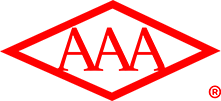Talking about the difference between national standard cable and non-standard cable
by:AAA
2020-03-21
When choosing cables, choose cables according to your own site usage, and don't covet cheap.
I think the cable is cheap and can be guaranteed to be the national standard, nine times out of ten is playing the edge ball. Fool users who are not professional and do not understand the industry.
In order to enable the majority of users to have a clearer understanding of the quality standards of cables and wires and the differences between national standards and non-standards for self-judgment.
Below we combine the actual situation often encountered by engineering users and the cable industry, so that everyone can make a simple understanding.
Cables and wires are mainly used in engineering users and construction projects. These three kinds of cables appear: 1. National standard cables: cables produced according to the relevant cable standards technology issued by the state are referred to as international cables.
2, line standard cable: according to industry standards, mainly there are fewer corners, but does not affect the use of large performance.
3. Non-standard cables: products that should be pregnant to meet the needs of the city.
Nowadays, the application of wire and cable is more and more extensive, and then there are more and more types of wires and cables sold on the market.
So, how to distinguish the 'national standard' and 'non-standard' of wires and cables?
It is recommended that you have a look, two Tests, three weighing, four ratio prices, five copper quality, six quality tests, and six moves.
A look: it depends on whether the wire and cable products have a quality system certificate, whether the certificate is standardized, whether there is a factory name, factory address, inspection seal, production date, see if the wire is printed with trademarks, specifications, voltage, etc.
It also depends on the cross section of the copper core of the wire. The superior copper is bright in color and soft in color, otherwise it is a defective product.
Second Test: it is advisable to bend a wire head repeatedly by hand. Anyone who has soft hand feeling, good anti-fatigue strength, large elasticity of plastic or rubber hand feeling and no cracks on the wire insulator is a superior product.
Three Weight: good quality wire and cable, generally every 100m weight is within the specified weight range. For example, the commonly used cross-sectional area is 1.
5mm2 plastic insulated single-strand copper core wire weighs 1 per 100 m. 8-1. 9 kg; 2.
5mm2 plastic insulated single-strand copper core wire with a weight of 3-per 100 m-3. 1 kg; 4.
0mm2 plastic insulated single-strand copper core wire weighs 4 per 100 m. 4-4. 6kg and so on.
Poor quality wire weight is insufficient, either the length is not enough, or the wire copper core impurities are too much.
If it is a cable, especially a large-sized cable, the earth method of weighing is the simplest method that can best reflect whether the cable contains copper and whether the conductor section is sufficient, generally, there are cables that steal copper to make small sections. If the copper content of the cables is not within the weight range of the allowable error stipulated by the state after weighing, it can be basically considered as non-standard.
Four Prices: due to the low production cost of fake and shoddy wires, vendors often sell at a low price under the guise of low price and good quality, which makes people fall for it.
Therefore, when buying, be careful not to get carried away by the merchants' good quality and low price, and finally be cheated. Five look at the copper.
Qualified copper core wire copper core should be purple red, shiny, soft to the touch.
Five look at the copper material: the copper core of the fake copper core is purple black, yellow or white, with many impurities, poor mechanical strength and poor toughness. It will break with a little force, and the wire is often broken.
During the inspection, you only need to peel off one end of the wire and rub it slightly on the copper core with a piece of white paper. If there is black substance on the white paper, it means that there are more impurities in the copper core, can be identified as 'non-standard' wire and cable.
Six quality inspection: In the case of differences in cable quality, it can be sent to a third-party testing organization for testing. Based on whether the authoritative test report is qualified.
Custom message


































































































